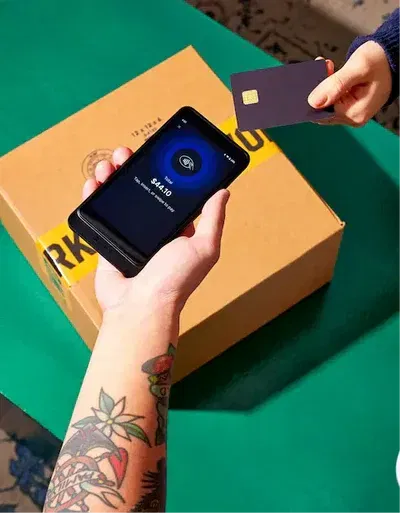Top Palette 4 Colors Ideas to Inspire Your Next Design
The Power of Four in Color Design
Choosing colors can feel like magic—or mayhem. You’ve got an idea in your head, maybe even a theme. But when it comes to actually creating a cohesive palette 4 colors, things start to get messy. That’s where strategy comes in.
A thoughtfully chosen four-color palette is the sweet spot between simplicity and variety. It’s versatile, scalable, and works beautifully for web design, branding, marketing, and even UI/UX.
In this post, I’ll walk you through how to create an eye-catching, emotionally resonant hex color palette that aligns with your brand or personal style. You’ll learn how to use color selector tools, how to identify color harmony using a hex color wheel, and how to pick a scheme that works in both print and digital settings.
| Section Title | Key Concepts | Detailed Information | Suggested Visuals |
|---|---|---|---|
| Introduction | Purpose of a 4-color palette | Explains why using a palette 4 colors offers a balance between design flexibility and visual harmony. | None |
| Why 4 Colors Work | Design benefits | Provides reasons for choosing four colors: balance, scalability, consistency, and clarity across platforms. | Grid showing 2, 3, 4, 5 color palettes in use |
| How to Choose Colors | Palette building steps | Step-by-step: choose base, secondary, accent, and neutral colors. Explains emotional and visual roles. | Color blocks labeled with their roles |
| Tools to Use | Online utilities | Lists tools like Adobe Color, Coolors, Paletton, Colormind, HTML Color Codes. Helps build hex color palette easily. | Screenshot collage of color tools |
| Trending Color Palettes | Example schemes | Provides four themed color palettes with hex codes: Retro Earth, Tech Brights, Pastels, and Corporate. | Color tile samples with hex codes underneath |
| Applying in Web Design | HTML/CSS integration | Shows how to assign colors via CSS variables, and explains usage roles for base, accent, and neutral colors. | UI mockup using the palette structure |
| Common Mistakes | Pitfalls to avoid | Warns against using too many bright colors, not checking contrast, ignoring brand alignment. | None |
| Cross-Platform Usage | Multi-use value | Shows how to apply palettes in web, print, social media, decks, and brand kits. | Table: usage by platform (Web, Print, Social, Slides) |
| Conclusion | Call to action | Encourages readers to explore tools, test palettes, and create consistent visual identities. | None |
Section 1: Why a Palette of 4 Colors Is a Design Sweet Spot
When choosing colors for a project, more isn’t always better. A palette 4 colors provides enough flexibility for depth, contrast, and emotion without overwhelming the viewer.
Benefits of a Four-Color Scheme:
- Balance: You get a main color, a secondary, an accent, and a neutral.
- Consistency: Easier to maintain a coherent visual identity.
- Simplicity: Reduces design decision fatigue.
- Scalability: Works across logos, websites, packaging, and social media.
Ideal Use Cases:
- Websites & Landing Pages
- Logos & Brand Kits
- Email Templates
- App UI Design
- Print & Packaging
Insert image: grid comparison of 2, 3, 4, and 5-color palettes applied to sample layouts.
Section 2: How to Choose a Palette 4 Colors That Actually Works
Let’s break this down with a color strategy that just works:
Step 1: Choose Your Base Color
- This is your brand’s main shade. Think of it as your anchor.
- Use a color chooser or color selector online tool to play with options.
- Ask yourself: What emotion do I want this color to evoke?
Step 2: Add a Secondary Color
- This supports your base, either through harmony or contrast.
- Use tools like Coolors.co, Color Hunt, or HTML Color Codes to experiment.
Step 3: Pick an Accent Color
- A pop of contrast or energy (e.g., coral with navy and beige).
- Ideal for buttons, icons, or CTAs.
Step 4: Choose a Neutral
- White, gray, tan, or black.
- Helps balance your palette, especially for backgrounds or text.
Insert image: Sample palette blocks with base, secondary, accent, and neutral labels.
Section 3: Tools to Help You Build and Test Your Palette
Creating a color palette code can be effortless with the right tools.
Best Online Color Pickers & Tools:
| Tool Name | Purpose | URL |
|---|---|---|
| Adobe Color | Advanced palette building | color.adobe.com |
| Coolors | Random + custom palettes | coolors.co |
| Paletton | Interactive color wheel | paletton.com |
| Colormind | AI-generated schemes | colormind.io |
| HTML Color Codes | Manual hex color selector | htmlcolorcodes.com |
Use these to create your own:
- hex code palette
- css color palette
- html colour palettes
Section 4: Trending Color Palettes with Hex Codes (Examples & Ideas)
Let’s explore some ready-made color palettes with hex codes that you can swipe or remix:
1. Retro Earth Tones
- #C19A6B (Tan)
- #9C6644 (Brown)
- #A3B18A (Sage)
- #3E1F0D (Dark Espresso)
2. Bold & Bright Tech
- #1A1AFF (Electric Blue)
- #FF4C29 (Coral)
- #212121 (Charcoal)
- #FAFAFA (Soft White)
3. Soft Pastel Mood
- #F6C1C1 (Blush Pink)
- #B9FBC0 (Mint)
- #FFDAC1 (Peach Cream)
- #F0F4EF (Pale Gray)
4. Clean Corporate Look
- #003049 (Navy)
- #D62828 (Crimson)
- #F77F00 (Amber)
- #F8F9FA (Off White)
Insert image: 4 color tiles per palette with hex codes below each.
Section 5: How to Use Your 4-Color Palette in Web Design
Once you’ve built your hexadecimal color schemes, it’s time to implement.
CSS Color Palette Implementation Tips:
- Use CSS variables for consistency (e.g.,
--primary-color: #003049) - Use neutral for backgrounds, base for primary areas, accent for CTAs, and secondary for headings or highlights
- Maintain accessibility (contrast ratios should be WCAG compliant)
HTML + CSS Snippet Example:
:root {
--primary-color: #003049;
--secondary-color: #F77F00;
--accent-color: #D62828;
--neutral-color: #F8F9FA;
}
Recommended Uses:
- Button hover states
- Link text
- Section backgrounds
- Navigation menus
Insert image: sample UI mockup using the palette with labeled roles.
Section 6: Common Mistakes When Choosing a Color Scheme
Avoid these color crimes:
- Using too many saturated shades: leads to visual fatigue
- Not testing in dark/light modes
- Ignoring brand message: Color should match tone
- No contrast: Poor legibility = poor user experience
Run every palette through a web color matcher tool to test contrast, harmony, and emotion.
Section 7: Using a Color Palette Across Platforms
A solid graphic color palette should be portable:
- Websites: Use hex codes or CSS variables
- Social Media: Canva and Adobe Express support saved palettes
- Print: Convert to CMYK or Pantone as needed
- Presentation Decks: Apply styles consistently across slides
Bonus Tip: Store your html color scheme in a shared brand kit folder to ensure consistency across team members and platforms.
Insert table: “Color Usage by Platform” – Web, Print, Social, Slides, Branding
1. What Is a Palette 4 Colors and Why Should I Use One in Design?
A palette 4 colors is a color scheme composed of four distinct colors chosen to work harmoniously. This structure is popular because it offers creative freedom without becoming visually chaotic. Typically, it includes:
-
A primary color for branding or main UI elements
-
A secondary color for highlights or depth
-
An accent color for contrast or calls to action
-
A neutral color (like gray or off-white) for background balance
Using a structured hex color palette improves brand consistency across websites, graphics, and printed materials while making designs more appealing and easier to navigate.
2. How Do I Choose the Right Four Colors for My Palette?
Choosing the right palette 4 colors involves strategic selection:
-
Start with a base color you associate with your brand.
-
Use a color selector online to find a complementary or analogous tone.
-
Add an accent color using a hex color wheel to create contrast.
-
Finish with a neutral like #F9F9F9 or #333333 for text or background balance.
Tools like Coolors, Adobe Color, and HTML Color Codes let you test your combination visually and ensure good contrast.
3. Which Online Tools Help Me Build a 4-Color Hex Palette Easily?
These are the most popular color chooser and color selector tools to generate hexadecimal color schemes:
-
Coolors.co – Fast random color generation and locking
-
Adobe Color – Interactive hex color wheel for theory-based design
-
HTMLColorCodes.com – Manual color code picker with previews
-
Colormind.io – AI-based palette suggestions
-
Paletton – Excellent for color theory and layout previews
Each supports exporting a color palette code in hex, CSS, or SCSS formats for immediate use.
4. What Are Some Examples of Popular Palette 4 Colors for Web Design?
Here are a few ready-made color palettes with hex codes:
Modern Minimalist:
-
#F5F5F5 (off-white)
-
#CCCCCC (light gray)
-
#333333 (deep gray)
-
#FF6B6B (accent coral)
Professional Blue Scheme:
-
#003049 (navy)
-
#669BBC (sky blue)
-
#FDF0D5 (cream)
-
#C1121F (scarlet)
Trendy Pastels:
-
#B9FBC0 (mint)
-
#FFDAC1 (peach)
-
#F6C1C1 (pink)
-
#F0F4EF (light gray)
Use a css color palette to implement these across your site’s style sheet.
5. How Can I Apply My 4-Color Palette to a Website?
To use your palette 4 colors in web design:
-
Assign each color a role (primary, secondary, accent, neutral)
-
Use CSS variables:
-
Apply them to text, buttons, backgrounds, and borders
-
Use web color palette codes consistently for brand identity
Test contrast with tools like WebAIM Color Contrast Checker to maintain accessibility.
6. Can I Use a Color Chooser Online to Find Matching Colors?
Yes. A color chooser online lets you:
-
Select a base hex value
-
Preview complementary and triadic matches
-
Copy hex codes instantly
-
Generate colour palettes hex codes optimized for web or print
Many tools like Canva, ColorSpace, and Khroma also integrate with graphic platforms for seamless usage.
7. What’s the Difference Between a 3-Color and a 4-Color Palette?
A 3 color palette often includes a base, secondary, and accent color. It’s simpler but can feel limited.
A palette 4 colors adds depth by including a neutral, which increases usability across text backgrounds, headings, and UI components. It’s more flexible, especially for content-heavy platforms or responsive sites.
8. Are There Any Rules for Using Colors in Web Design (CSS/HTML)?
Yes, use these html colour palettes rules:
-
Stick to your core hex code palette across the full design
-
Use light backgrounds with dark text or vice versa for contrast
-
Limit accents to <10% of total design real estate
-
Maintain consistency across breakpoints (responsive design)
Include your html color scheme as part of your brand guide or CSS file.
9. Can I Use the Same Palette for Print and Web?
Yes—with adjustments. Hex codes are perfect for digital, but for print:
-
Convert to CMYK or Pantone
-
Use tools like Pantone’s Color Finder or Adobe Illustrator’s swatch library
-
Print a test sample to check color matching
Maintain color harmony, but adjust brightness/contrast as screens emit light, while paper absorbs it.
10. How Can I Match My Website’s Palette with Social Media Graphics?
Use tools like Canva Brand Kit or Adobe Express to upload your palette 4 colors. Then apply those colors to:
-
Instagram post templates
-
Facebook cover images
-
LinkedIn banners
-
Twitter cards
Consistency in your graphic color palette builds brand trust and recognition.
11. What Are the Most Trending Color Palettes Right Now?
According to color trend research, these trending color palettes are hot in 2025:
-
Cyber Lime (#D0FF14) and Jet Black (#0A0A0A) – bold tech contrast
-
Digital Lavender (#CBAACB) – soft tech aesthetic
-
Eco Greens (#A8C686, #4C956C) – nature-centric, earthy
-
Metallic Cool Tones (#A3BAC3, #BFD7EA) – clean, futuristic look
Use these as pattern colors across modern UI kits and minimalist designs.
12. How Do I Make Sure My Color Palette Is Accessible?
Accessibility matters. Here’s how to audit your palette 4 colors:
-
Use color lookup tools to test contrast
-
Check ratios between background and text
-
Ensure links stand out without relying on color alone
-
Avoid combinations like red-green or blue-purple without size/weight contrast
Use tools like Stark or Contrast Ratio checker to validate your html color scheme.
13. What Is a Hex Color Code and How Is It Used?
A hex color code is a six-digit alphanumeric string starting with # used in CSS and HTML to define colors, e.g., #FF5733.
Each code consists of:
-
Red (first two digits)
-
Green (middle two digits)
-
Blue (last two digits)
Together, they form a hexadecimal color scheme usable across all digital platforms.
14. Can I Export My Color Palette from Online Pickers into CSS or Design Software?
Yes. Most online color pickers offer export options:
-
CSS variables or hex code lists
-
SCSS maps for SASS integration
-
PNG or SVG palette swatches
-
Direct integration with Figma, Adobe, or Canva
Look for export buttons on tools like Coolors or HTMLColorCodes.com.
15. What Should I Avoid When Creating a Palette 4 Colors?
Avoid these palette-building mistakes:
-
Picking four bold colors with no neutral
-
Poor contrast between background and foreground
-
Overusing accent colors—dilutes visual impact
-
Inconsistency across platforms (print vs. web)
-
Not testing how your palette appears to users with color blindness
Use a web color matcher or browser plugin to preview your palette in real use cases.
Conclusion: Craft Your Signature Look with a Palette 4 Colors
Design doesn’t have to be overwhelming. With the right palette 4 colors, you’ll find it easier to build visual harmony and brand recognition—without second-guessing every shade.
Use tools like a color chooser online, hex color wheel, or color selector hex to create smart, scalable schemes. Then test them in action—on the web, in print, and everywhere in between.
Now over to you: What’s your go-to four-color palette? Share it in the comments—or try building one today using the tools we’ve recommended above!
Relevant Backlinks – How to Get High-Quality Links for Better SEO




